- Home
- Dean Koontz
Writing Popular Fiction Page 14
Writing Popular Fiction Read online
Page 14
BEHIND THE SCENES IN ANYTOWN USA
The author dissects life in a small town, giving the reader a "scorchingly honest" view of hidden moral corruption and sexual permissiveness. Grace Metalious' Peyton Place was the first major novel of this type.
In the first four BigSN plot types, you must also attempt to carry off a roman à clef [French for "novel with a key"], a story in which the characters all seem to be allusions to real people-preferably quite famous people-and to real events the reader may have read of in newspapers and magazines; this establishes a celebrity guessing game among readers and reviewers that strengthens the illusion that you are telling of genuine events and, not incidentally, increases the book's sales. ("Was Evelyn, in the novel, really Judy Garland?"
"Was Blanche really Marilyn Monroe-or Jane Mansfield?"
"Was Lew really Rock Hudson, or might he be Henry Fonda?") In actuality, the BigSN bears only passing resemblance to the real lives of the personalities mentioned, but the reader likes to feel that he is getting the whole, ugly story, firsthand. (You research these stories the same way as you do stories in other categories: by reading books on the neighborhood, profession, or industry, and keeping current with social behavior and celebrities through magazines and newspapers.)
In the fifth type of story, Anytown USA, you must not provide a roman à clef, because the reader wants to do that himself, placing the novel in his own town. You thoughtfully provide sparsely characterized professional types-a town doctor cheating on his wife, a policeman cheating on his wife and taking bribes on the side, a school teacher who's really a nymphomaniac who can't keep her hands off the principal or her students-whom the reader can think of in terms of people he knows.
The only taboos in BigSN, then, are too-explicit language that would irritate the sensibilities of Middle America, and "bad" sexual conduct that goes unpunished. The BigSN reader wants to see the sinners reformed or delivered unto retribution, preferably the former. The cheating husband or wife should either finally "see the light" and quit his or her adulterous activities, meet a violent end because he or she cannot see the light, or get a divorce so that everyone can be happier in the end. (Warning: Do not employ divorce as a solution to the BigSN problems unless you have no other reasonable course. Many of the women who read the Big Sexy Novel are terrified of divorce and, rather than seeing it as an answer to the problem, might find it a frightening and depressing non-conclusion. This might change, too, in coming years, as more and more women realize their value, as people, outside of the institution of marriage.)
In the Rough Sexy Novel, however, you must be sure to use explicit language and rich detail in the sex scenes. The only taboo is a reverse of the BigSN requirement: No character shall be punished for his sexual conduct, and neither shall he be reformed. The entire point of the RoughSN, or the "porn" book, is that sex is healthy, exciting, and extremely desirable in almost any quantity or quality. No "perversion" can be criticized in the Rough Sexy Novel, unless it is one in which one of the sexual partners is hurt. Sadism and masochism, then, are usually unpopular topics for Rough Sexy Novels, while homosexuality, lesbianism, group sex, troilism, and most other bedroom activities are not only permissible but encouraged.
In the Big Sexy Novel, the character motivation must be believable; the bedroom action plentiful; the hero and/or heroine sympathetic (she or he should have problems which all of us can identify with: married but in love with another man/woman; problems with children and jobs); the background at least exotic if not colorfully developed; but there need not be a terribly strong plot, in the sense of telling an exciting, tension-filled story. The "plot" of a BigSN is constructed from the peek-behind-the-scenes of whichever one of the five backgrounds you're using, and from the string of sex scenes and the sexual interrelationships of the characters. A carefully developed, exciting plot would require too high a ratio of story to sex; every chapter of the BigSN must have at least one sexual encounter, which leaves only a small portion of the book for other purposes.
The BigSN will have one major problem that must be solved by the end of the story, though that problem will not be one that requires great physical resources on the hero's part and will be solved after the hero has climbed over only a minimum of obstacles to his success (or failure). For example: the publisher-hero might be losing financial control of his magazine empire and be fighting desperately to hold onto it; the doctor-hero might have a big and important operation to perform on someone of note, on the woman he loves, or on a small and defenseless child; the lawyer-hero might be arguing a nationally publicized case upon which his whole reputation is staked. But the main plot of the BigSN will come from the dozens of affairs, between the many characters, and the reader's curiosity about how each will turn out. ("Will Samantha get her just rewards and lose Bill to Tina?" "Can Joan and Don find happiness together when she is so frigid?" "Will Arthur's homosexuality prove incurable, or will Beth's love help him to straighten himself out?")
Understandably, with all these interlocking affairs progressing simultaneously, you almost always require the modified omniscient viewpoint to tell the story-that from which you can settle into the head of each of the characters when you need to and can develop several plot threads at once. (See Chapter Nine for a discussion of viewpoints in category fiction.) If you insist on using the third person limited or the first person viewpoint, you must stretch the story action over a considerably longer period of time than when employing the modified omniscient voice: if you have twenty characters and use the latter voice, you can write about a hundred different sexual encounters in a week or ten days of story time; but you cannot expect a reader to believe that your hero and heroine have the stamina to indulge that often in the same amount of time. Besides, the more characters you introduce, the more kinds of kinky behavior you can write about-and variety is the spice of the Big Sexy Novel.
A BigSN hero should be a sexual dynamo, thinking about making love when he isn't, a handsome and virile dream-boat. The BigSN heroine should be exceedingly desirable, possessed of a handsome lust of her own-but she should always be somewhat hesitant at the start of every sex sequence. Even if she has bedded five different men on fifteen different occasions since the start of the book, she must be a bit trembly and unsure with the sixth man on the sixteenth occasion. She will stall, wonder if they really ought to, and only give in to the hero's gentle but persistent urging. Once she has decided to participate, however, she must be his equal as a lover, enthusiastic and versatile.
The vocabulary of the BigSN should always be simple. The fewer multi-syllabic words you use, the better. This does not mean that the BigSN reader has a more limited vocabulary than other genre readers; however, most BigSN fans want a book that can be read at the beach, over several evenings, between household chores-in short, a book that is interesting but not so demanding that it must be read carefully and in as few sittings as possible. You must learn to deliver simple entertainment slightly cloaked in "meaning," in a style as easily read as anything in The New York Daily News.
In the Rough Sexy Novel, the plot is also minimal. The main story problem may be similar to that in the BigSN, or it may be strictly sexual in nature. For example, your heroine may be a nymphomaniac trying to come to terms with her sexual nature, or a frigid wife learning to be a good lover, or a young boy or girl coming of age and fighting to achieve an adult sexual harmony with their peers. Just as with the BigSN, you should read a great deal of the field to fully understand how a RoughSN plot is structured and to get the proper feel for sex scene description. Any dozen titles published by Olympia Press and its subsidiary houses will properly acquaint you with the styles and language requirements of this kind of erotic novel.
In the RoughSN, the heroine-unless her frigidity is the central story problem-should be every bit as virile and anxious for love-making as the hero. Indeed, she should be outright aggressive and should, at least half the time, initiate the sex scene herself. For the most part, women read the BigS
N and they want the heroine to be the constant focus of male aggression, the recipient of unlimited sexual offerings. Likewise, the overwhelmingly male audience for the RoughSN wants the hero to be the focus of female aggression and the recipient of unlimited pleasure.
Finally, when you choose a title for your erotic novel, you must carefully consider your market. The reader who buys the Big Sexy Novel wants a "refined" title, something that will not embarrass her when she buys the book, and something which she can unhesitatingly leave out on the coffee table to impress guests or generate conversation. The Voyeur, The Exhibitionist, The Love Machine, Good Time Coming, The Rag Dolls, The Body Brokers, and The Ravishers are all good BigSN titles, because they promise erotica without blatantly heralding the book's content. None of these, however, would be appropriate titles for the RoughSN, which must come on much more forcefully, as these several examples attest: Share the Warm Flesh, Thirteen and Ready!, Swapper's Convention, Sextet, Thrust, and Hung.
Erotica is included in this book because-though it does not follow the category plot formula and is often lacking in the other four basic requirements of category writing-editors and publishers refer to it, handle it, and think of it in the same way they do any other genre. The form can be labeled, and monthly erotica lists can be established. This is more true of the RoughSN than the BigSN, but applicable to both.
The advantages of the form are obvious. A BigSN author, if his book should catch on and make the bestseller lists, will earn far more money from far higher sales than he could with a bestseller from any other category. Even if his book only skirts the bestseller lists or receives no particular special attention in hardcover, it will generate larger paperback advances and sales than will titles in other categories. If he's lucky, the BigSN author can establish himself with a few books, and gain fame (of a questionable sort) that few other genre writers ever enjoy. Because he makes more money per novel, he can spend less time at the typewriter than the average genre author-or, he can spend the usual time and, working within the strict requirements of the BigSN form, write better books than he could if he had to churn out ten a year. Somehow, though, the successful BigSN writer never seems to take advantage of this last benefit.
The disadvantages of the BigSN are also clear. You can rarely create anything meaningful within the genre, because of its sex requirements. James Jones, Joyce Elbert, Gwen Davis, and a handful of others have now and then come close to bits of art in their BigSN work, but those moments are outweighed, by far, by the unusual BigSN content. Also, while the writers working in other categories are delivering average 60,000-word scripts, the BigSN author must put together a story at least 100,000 words long and preferably 150,000-250,000 words. A 120,000-word novel is not simply twice as hard to write as the 60,000-word book, but geometrically more taxing, because the plot and the character interaction must be several times more complex in order to support these extra pages. Only the profound novel with genuine insights and something important to say can carry this many words; profundity is ruled out for the BigSN author, by the definition of his field. Because the size requirement is difficult to meet, many writers tend to overwrite the BigSN, to puff it up. Often, they lose their perspective after a few books and no longer consciously realize that they are puffing.
Since the advances and royalties in the Rough Sexy Novel field are lower than the average for category work, no one should set out to become a RoughSN writer for money. If you can write a porn novel quickly (a week is not a bad schedule, for the professional in this field), then you can keep your work-reward ration at a reasonable level and you can enjoy other benefits of the field. For one thing, since virtually all Rough Sexy Novels are published under pen names, you can learn to polish your writing while getting paid for the pleasure, and have no fear of damaging your creative reputation. Also, because the RoughSN puts absolutely no restrictions on the writer besides the requirement of regular sex scenes, one after the other, you can experiment with style, try stream-of-consciousness, present tense narrative and other stylistic tricks, to learn if you can make them work. If they fail, you still get your RoughSN money; if they succeed, you can adapt them to serious work, later.
The disadvantages of the RoughSN form are these: low advances; royalties are rarely reported correctly from exclusively RoughSN publishing houses, and often they are not reported at all; you are not building a useful reputation as a writer; you may write so many Rough Sexy Novels that you literally burn yourself out.
Finally, both BigSN and RoughSN authors are subject to boredom with their work. Subconsciously if not consciously aware that their work is strictly formulized and repetitive, having written thousands of sex scenes in what few ways they can be written, they lose interest in producing anything more. And this, for the writer, is the worst fate of all.
CHAPTER EIGHT The Most Important Chapter in this Book
This is not only the most important chapter in this book, but the shortest as well. It consists of one piece of advice that no new writer can afford to ignore.
I have given you the rules and requirements of each modern category of fiction. In the chapter that follows this one, I'll discuss some writing techniques that are applicable to all the categories. When you've read all this, you can go out to the bookstore and purchase a dozen novels which, in some minor or major way, break one or more of these rules, fail to meet these requirements, and ignore some of these Dos and Don'ts. Writers break rules and still get published all the time. But these are writers who have published, for the most part, numerous other books: people who have learned all the rules, have proved that they can use them successfully time and again, and have therefore earned the right to break a tradition or two. Just as the abstract painter must first learn how to draw in realistic detail, so must the rule-breaking writer first learn how to write saleable material within the restrictions I've talked about. Your road to success in any genre will be shorter if you walk the known trail and leave the exploration of new territory for later.
CHAPTER NINE Other Questions
Familiar with the five basic ingredients of category fiction-a strong plot, a real hero or heroine, believable character motivation, a great deal of action, and a colorful background-and having learned the fundamentals of each category, you will have other things to consider, things of a lesser magnitude than those already discussed but nevertheless also vital to the quality of the finished work. Most of these do not present problems unique to category fiction, though they are none the less important for their literary universality. We'll consider each in a general way, and, where necessary consider each as it applies in a special way to one or more of the genres.
Plot wheels, plot cards, and story construction lists, all of those devices one time on sale to help writers get ideas, are utterly useless for the serious fiction craftsman. Writing, after all, is an art as well as a craft, requiring emotional involvement on the artist's part, a commitment you are clearly not ready to make if you think such a mechanical plotting system will be valuable to you.
Likewise, if you attempt to build stories from newspaper clippings, you are fooling yourself if you believe you can establish a body of respectable work in this manner. Some writers have sold stories generated by human interest newspaper clippings; indeed, one writer I know of has sold more than two dozen stories that originated like this. Rarely, however, are these pieces good fiction: because the most engaging newspaper human interest stories revolve around a quirk of Fate or coincidence, the final plot of the fictionalized version is forced or outright incredible. You also run the risk of using a clipping that is being simultaneously developed by another writer, one who-if the idea is saleable-may hit the proper market before you and effectively render your work dated and imitative. The world of writers is not so small that this is unlikely. I know of three different cases where it happened, making the unlucky author's work useless.
Plot wheels and newspaper clippings can't provide you, either, with a genuine concern for your characters and the
ir situation. For that, your story people and their milieu must come from within you, based on your personal experiences, revolving around lessons and truths you have learned.
This doesn't mean you must write only about what you have done yourself. Obviously, that would badly limit any writer. "Personal experiences" may include things that have happened to you, to friends, to others you've heard about; things you've learned from books, movies, television, radio, school, and other sources. Everyone is a witches' cauldron of bubbling facts, ideas, images, and memories. You must learn to tap this magical brew and order the unconscious plots within it.
You can learn to open this inner storehouse in many ways, though I've found the following two methods to be the most rewarding. I have frequently used both since sold my first story and recently developed my forty-second novel with the second method.
METHOD ONE: PLAYING WITH EXOTIC TITLES
A story title is not always dictated by the finished work. Indeed, by spending an hour playing with odd title possibilities, you may gradually generate an entire story idea. Begin by choosing a dramatic or colorful word that will catch a potential reader's interest and which will be the central word of the title you finally arrive at. Man, horse, winter, rain, coat, and similar words would be bad choices, for they are too common and undramatic. Words like death, blood, fear, witch, killer, thief, darkness, prisoner, and sword would be good title beginnings, for each has dramatic potential. With a key word in mind you're ready to begin winging it.
I've always kept notebooks in which I record all my free-associating for posterity, and I can, therefore, faithfully recall how I generated title and plot for my first published science fiction story. I began with the central word dragon, because it was rich with fantastic, fearful implications. At first, I played at adjectival amplification of that single word, jotting each idea down in a list:

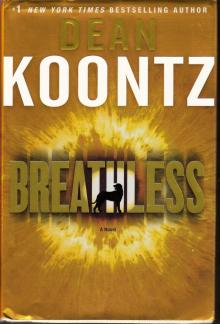 Breathless
Breathless Lightning
Lightning The Taking
The Taking The Door to December
The Door to December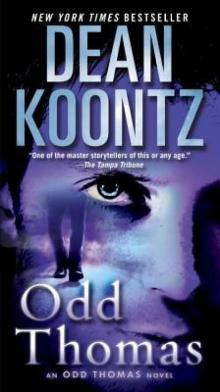 Odd Thomas
Odd Thomas Midnight
Midnight Whispers
Whispers Odd Interlude #2
Odd Interlude #2 The Mask
The Mask Watchers
Watchers By the Light of the Moon
By the Light of the Moon Night Chills
Night Chills Brother Odd
Brother Odd False Memory
False Memory The Darkest Evening of the Year
The Darkest Evening of the Year Life Expectancy
Life Expectancy The Good Guy
The Good Guy Hideaway
Hideaway Innocence
Innocence Your Heart Belongs to Me
Your Heart Belongs to Me Forever Odd
Forever Odd Intensity
Intensity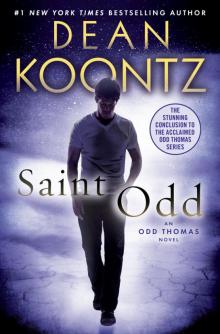 Saint Odd
Saint Odd Dragon Tears
Dragon Tears The Husband
The Husband Final Hour
Final Hour Demon Seed
Demon Seed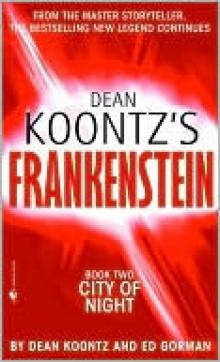 City of Night
City of Night From the Corner of His Eye
From the Corner of His Eye A Big Little Life: A Memoir of a Joyful Dog
A Big Little Life: A Memoir of a Joyful Dog Seize the Night
Seize the Night Winter Moon
Winter Moon Strange Highways
Strange Highways The Silent Corner
The Silent Corner Twilight Eyes
Twilight Eyes Velocity
Velocity The Bad Place
The Bad Place Cold Fire
Cold Fire The Whispering Room
The Whispering Room Ricochet Joe
Ricochet Joe The Crooked Staircase
The Crooked Staircase Tick Tock
Tick Tock The Face
The Face Sole Survivor
Sole Survivor Strangers
Strangers Deeply Odd
Deeply Odd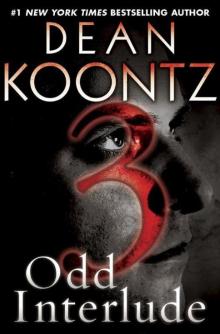 Odd Interlude #3
Odd Interlude #3 The Vision
The Vision Phantoms
Phantoms Prodigal Son
Prodigal Son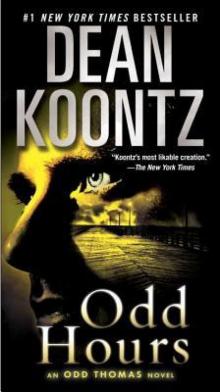 Odd Hours
Odd Hours Last Light
Last Light Fear Nothing
Fear Nothing Odd Interlude #1
Odd Interlude #1 One Door Away From Heaven
One Door Away From Heaven Koontz, Dean R. - Mr. Murder
Koontz, Dean R. - Mr. Murder The City
The City The Dead Town
The Dead Town The Voice of the Night
The Voice of the Night Dark Rivers of the Heart
Dark Rivers of the Heart The Key to Midnight
The Key to Midnight Lost Souls
Lost Souls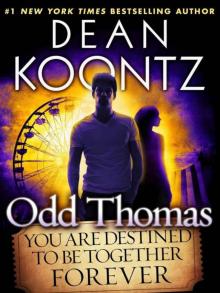 Odd Thomas: You Are Destined To Be Together Forever
Odd Thomas: You Are Destined To Be Together Forever Odd Apocalypse
Odd Apocalypse Icebound
Icebound The Book of Counted Sorrows
The Book of Counted Sorrows The Neighbor
The Neighbor Ashley Bell
Ashley Bell Santa's Twin
Santa's Twin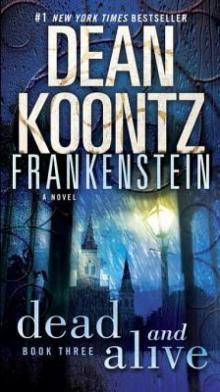 Dead and Alive
Dead and Alive The Eyes of Darkness
The Eyes of Darkness The Odd Thomas Series 4-Book Bundle
The Odd Thomas Series 4-Book Bundle Writing Popular Fiction
Writing Popular Fiction City of Night f-2
City of Night f-2 Dean Koontz's Frankenstein 4-Book Bundle
Dean Koontz's Frankenstein 4-Book Bundle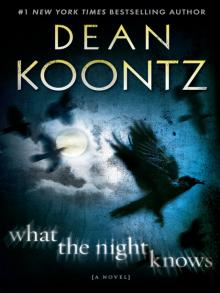 What the Night Knows: A Novel
What the Night Knows: A Novel Demon Child
Demon Child Starblood
Starblood Surrounded mt-2
Surrounded mt-2 Odd Interlude #3 (An Odd Thomas Story)
Odd Interlude #3 (An Odd Thomas Story)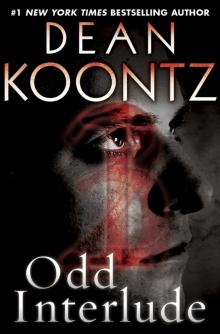 Odd Interlude
Odd Interlude The Odd Thomas Series 7-Book Bundle
The Odd Thomas Series 7-Book Bundle The City: A Novel
The City: A Novel Deeply Odd ot-7
Deeply Odd ot-7 Odd Interlude #1 (An Odd Thomas Story)
Odd Interlude #1 (An Odd Thomas Story) The House of Thunder
The House of Thunder Odd Interlude ot-5
Odd Interlude ot-5 Fear That Man
Fear That Man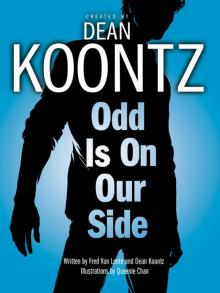 Odd Is on Our Side
Odd Is on Our Side Relentless
Relentless A Big Little Life
A Big Little Life Hanging On
Hanging On The Forbidden Door
The Forbidden Door Dragonfly
Dragonfly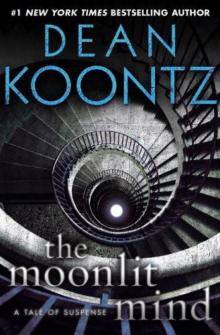 The Moonlit Mind: A Tale of Suspense
The Moonlit Mind: A Tale of Suspense Final Hour (Novella)
Final Hour (Novella) The Odd Thomas Series 4-Book Bundle: Odd Thomas, Forever Odd, Brother Odd, Odd Hours
The Odd Thomas Series 4-Book Bundle: Odd Thomas, Forever Odd, Brother Odd, Odd Hours Odd Interlude (Complete)
Odd Interlude (Complete)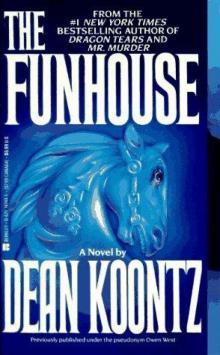 The Funhouse
The Funhouse 77 Shadow Street
77 Shadow Street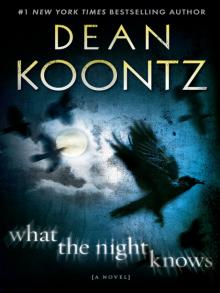 What the Night Knows
What the Night Knows Deeply Odd: An Odd Thomas Novel
Deeply Odd: An Odd Thomas Novel The Servants of Twilight
The Servants of Twilight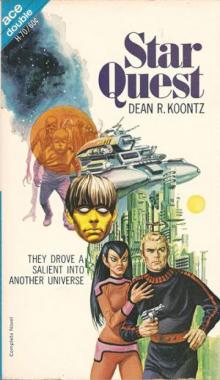 Star quest
Star quest Frankenstein Dead and Alive: A Novel
Frankenstein Dead and Alive: A Novel Chase
Chase Eyes of Darkness
Eyes of Darkness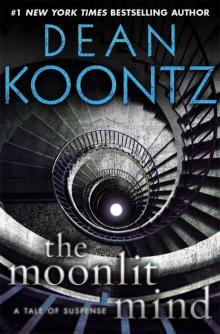 The Moonlit Mind: A Tale of Suspense (Kindle Single)
The Moonlit Mind: A Tale of Suspense (Kindle Single) Sussurri
Sussurri The Moonlit Mind (Novella)
The Moonlit Mind (Novella) Frankenstein: Lost Souls - A Novel
Frankenstein: Lost Souls - A Novel![Ricochet Joe [Kindle in Motion] (Kindle Single) Read online](http://i1.bookreadfree.com/i2/04/05/ricochet_joe_kindle_in_motion_kindle_single_preview.jpg) Ricochet Joe [Kindle in Motion] (Kindle Single)
Ricochet Joe [Kindle in Motion] (Kindle Single) Innocence: A Novel
Innocence: A Novel Beastchild
Beastchild A Darkness in My Soul
A Darkness in My Soul Oddkins: A Fable for All Ages
Oddkins: A Fable for All Ages The Frankenstein Series 5-Book Bundle
The Frankenstein Series 5-Book Bundle Frankenstein - City of Night
Frankenstein - City of Night Shadowfires
Shadowfires Last Light (Novella)
Last Light (Novella) Frankenstein - Prodigal Son
Frankenstein - Prodigal Son Ticktock
Ticktock Dance with the Devil
Dance with the Devil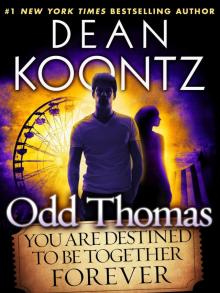 You Are Destined to Be Together Forever (Short Story)
You Are Destined to Be Together Forever (Short Story) The Moonlit Mind (Novella): A Tale of Suspense
The Moonlit Mind (Novella): A Tale of Suspense Darkness Under the Sun
Darkness Under the Sun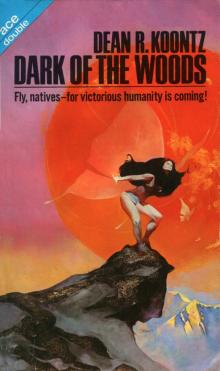 Dark Of The Woods
Dark Of The Woods Dean Koontz's Frankenstein
Dean Koontz's Frankenstein Frankenstein
Frankenstein The Face of Fear
The Face of Fear Children of the Storm
Children of the Storm Mr. Murder
Mr. Murder